Media | Articles
12 offbeat off-roaders at the Land Cruiser Heritage Museum
Utah native Greg Miller turned his passion for exploration and his obsession with the Toyota Land Cruiser into a world-class museum. Founded in 2012, the Land Cruiser Heritage Museum started as a small collection of trucks housed next to the Miller Motorsports Park in Tooele, Utah, before it moved to a brick-walled warehouse in downtown Salt Lake City in 2015 to expand while reaching a wider audience.
Its stated goal? To acquire and display one of every model of Land Cruiser ever produced. It’s a Herculean task, but one that Miller and his team are closer to completing than anyone else. As of 2020, the museum houses over 70 trucks ranging from a 1953 BJT to a 2020 Land Cruiser Heritage Edition, a model limited to 1200 units nationwide. There’s a Mini Cruiser, a Mega Cruiser, and nearly every other type of Cruiser made by Toyota and its partners over the years. Some are well-preserved classics, but many found their way to downtown Salt Lake after spending decades earning their keep in the hands of owners who considered them as disposable as a used pair of jeans. This cocktail of off-roaders from around the world is what makes the Land Cruiser Heritage Museum fascinating to visit. Here are some of its stand-out trucks.
BJT (1953)

The BJ isn’t Toyota’s first off-roader—that honor goes to the extremely rare AK10 made during World War II—but it’s the Land Cruiser’s direct predecessor. Its story starts in 1951, when the Japanese Army needed a Jeep-like vehicle and invited companies to submit prototypes. Toyota, Nissan, and Mitsubishi were among the companies that answered the call. Toyota’s entry performed well in preliminary tests and climbed effortlessly to the sixth station of Mount Fuji, but officials chose Mitsubishi’s proposal, which was essentially a Jeep Willys made under license with a handful of market-specific changes.
Marketplace
Buy and sell classics with confidence
Despite losing the bid, Toyota didn’t want to let a good design go to waste. It developed a civilian-spec variant named BJT (the T stood for touring), and it began producing the model in limited numbers in 1953. There were other versions, including one used by firefighters and another recruited by the Japanese police. While production figures are lost to history, it’s widely accepted that under 300 units were manufactured and scattered globally. The museum sourced its example (which, it notes, isn’t 100-percent original) from Australia.
In an odd twist of fate, the rejected Nissan proposal became the original Patrol. It still competes against the Land Cruiser in 2020, though it’s known as the Armada in the United States.
FJ25 (1958)

Toyota inaugurated its American division on October 31, 1957, and opened its headquarters in a former Rambler dealership located in Hollywood. It sold 288 cars in 1958, a number which put it far behind most of its European rivals. For context, Americans purchased about 57,000 examples of the Renault Dauphine that year, and roughly 7500 units of the 4CV. Volkswagen Beetle, Karmann-Ghia, and Bus sales totaled 78,588. Even Simca outsold Toyota on the lucrative American market that year.
Toyota’s first-year sales mix was interesting. It sold 287 examples of a sedan named Toyopet Crown and one single Land Cruiser, the first one registered in the United States. It’s the second truck you see when you walk into the museum, and it’s more historically significant than its time-worn body suggests.
It was sold by John Rose Toyota and delivered new to a Long Beach school teacher right at its port of entry because the dealership was still under construction. After being used daily, it spent years plowing snow in the mountains outside of Los Angeles and went through a series of owners until someone discovered its significance. Greg Miller purchased it in 2013 from a southern California-based restoration shop named TLC 4×4, and he plans to keep it as-is because he values originality above all. Good call.
FJ28L (1960)

Before it became an icon, whether it’s in the usual sense of the term or in Jonathan Ward’s world, the Toyota Land Cruiser slogged through some of the most merciless conditions on all four corners of the globe. There wasn’t a one-size-fits-all option; Toyota needed to develop different variants of the truck for different parts of the world, and it often teamed up with other companies to build the model locally. Made in 1960 for the Venezuelan market, this FJ28L pickup is intriguing because the cab and the cargo compartment are a single unit, giving it a look slightly reminiscent of the original Honda Ridgeline.
The advantages the FJ28L offered over the regular pickup, with its separate cab and cargo compartments, remain unclear. The Land Cruiser Heritage Museum explained this body style was only available in South America, and very few examples were manufactured during the early 1960s. The one shown here received a full restoration from House of Cruisers in Venezuela before joining the museum in 2019.
FJ43 (1963)

At first glance, there is nothing unusual about this early, right-hand-drive FJ43. Take a closer look. It has full doors, a metal top over the front seats, a removable canvas top covering the rest of the body, and half-metal, half-canvas rear doors. I’d never seen anything like it, and neither had the museum.
It was sold new on the Japanese market and is in beautiful condition inside and out, but it’s not a custom-made model. This FJ43 may have been a military variant, according to the collection’s historian, which could explain why there’s also a rear battery compartment integrated into the cargo floor. It’s powered by a 135-horsepower, gasoline-burning straight-six engine that spins the four wheels via a three-speed manual transmission, so there’s nothing unusual or absurd under the sheet metal.
The mystery persists. The Land Cruiser Heritage Museum is asking enthusiasts who can help it piece together this FJ43’s history to reach out with any and all information.
TB25L Bandeirante (1963)

Toyota do Brasil began manufacturing the Land Cruiser locally in 1958, and it changed the model’s name to Bandeirante in 1962. The name paid tribute to the men who ruthlessly explored many parts of Brazil in search of slaves and gold during the 17th century (likely, different nomenclature would be chosen today). As was often the case, the locally-made models differed from those available in other markets, like Japan and the United States.
The Mercedes-Benz star on this TB25L’s hood ornament wasn’t added by a wishful-thinking driver during the 1980s. Early models fitted with the 4.0-liter straight-six were ill-suited to exploring the remote parts of Brazil because they burned too much fuel, and gas pumps aren’t native to the Amazon rainforest, so Toyota replaced it with a 75-horsepower, 3.4-liter four-cylinder diesel sourced from Mercedes. It delivered a far-better driving range that explorers could augment by carrying jerry cans.
The engine’s OM 324 internal designation might confuse even those well-versed in Mercedes nomenclature. The Mercedes-Benz archives department explained the four-cylinder found its way into thousands of Toyota’s off-roaders, but it puzzlingly never made it into a single one of Mercedes’ own vehicles.
The OM 324 engine was replaced by the OM 314 in 1973, which was then superseded by the OM 364 in 1989. Mercedes also used OM 314 and OM 364 units in some of its trucks and vans, but it didn’t put them in its passenger cars. The Bandeirante shed its German genes in 1994 when it adopted Toyota’s 3.7-liter turbodiesel straight-six, a unit initially rated at 98 horsepower, and it kept this six-cylinder engine until it retired in 2001.
FJ45LV (1965)
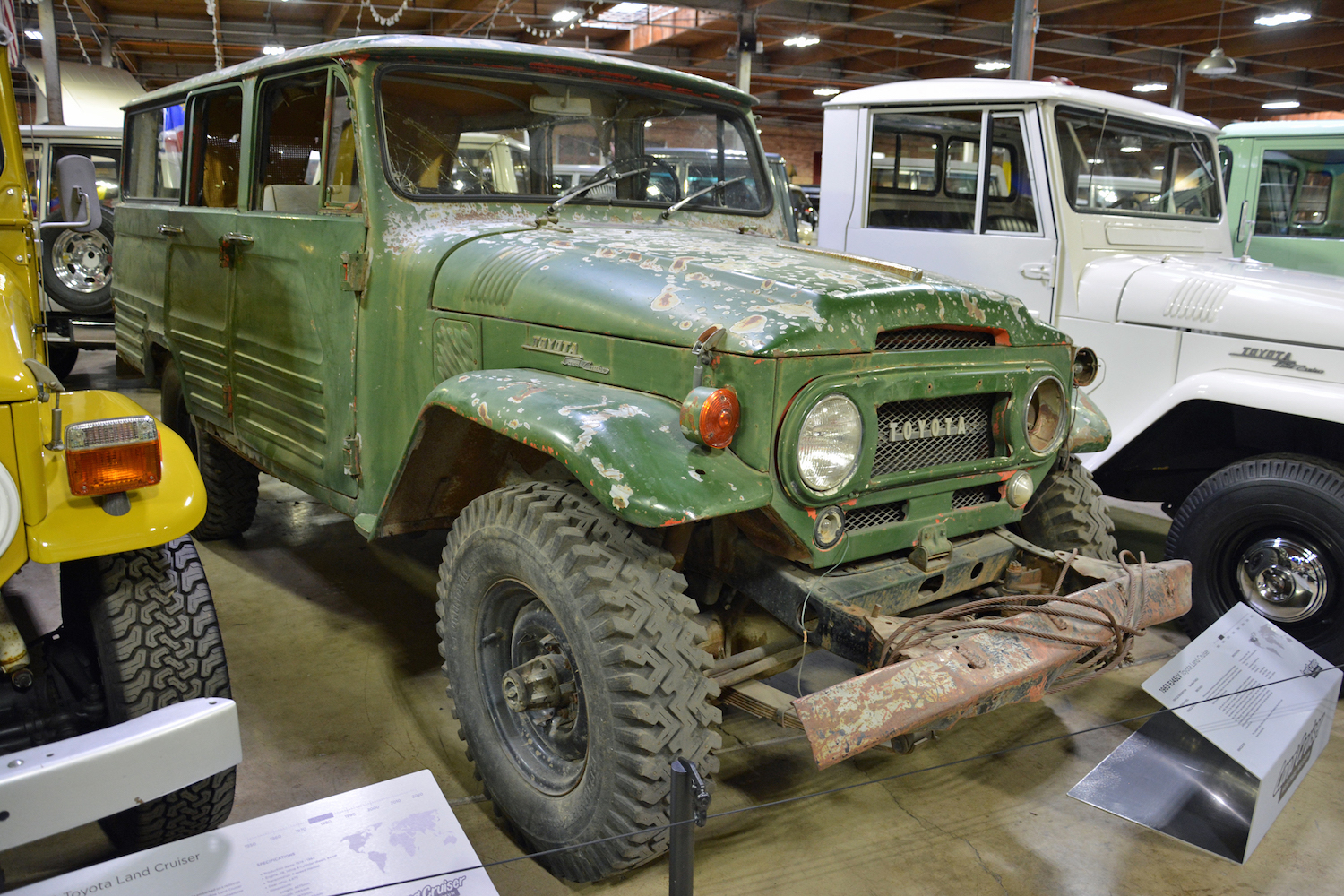
While some countries received groundbreaking variants of the Land Cruiser tailor-made to meet their unique needs, others settled for minor market-specific changes that, in hindsight, were a little less than irrelevant. This 1965 FJ45LV was sold new in Canada. How do I know? Not because it’s friendlier than a comparable American-spec model, but because it’s fitted with an extra air vent above the windshield.
The Land Cruiser Heritage Museum’s historian told me he can’t explain why trucks delivered in the United States didn’t get the same air vent as the ones built for Canada. And, on a similar note, no one knows what this example has been through, though it came from a collector in British Columbia.
FJ55 (1978)
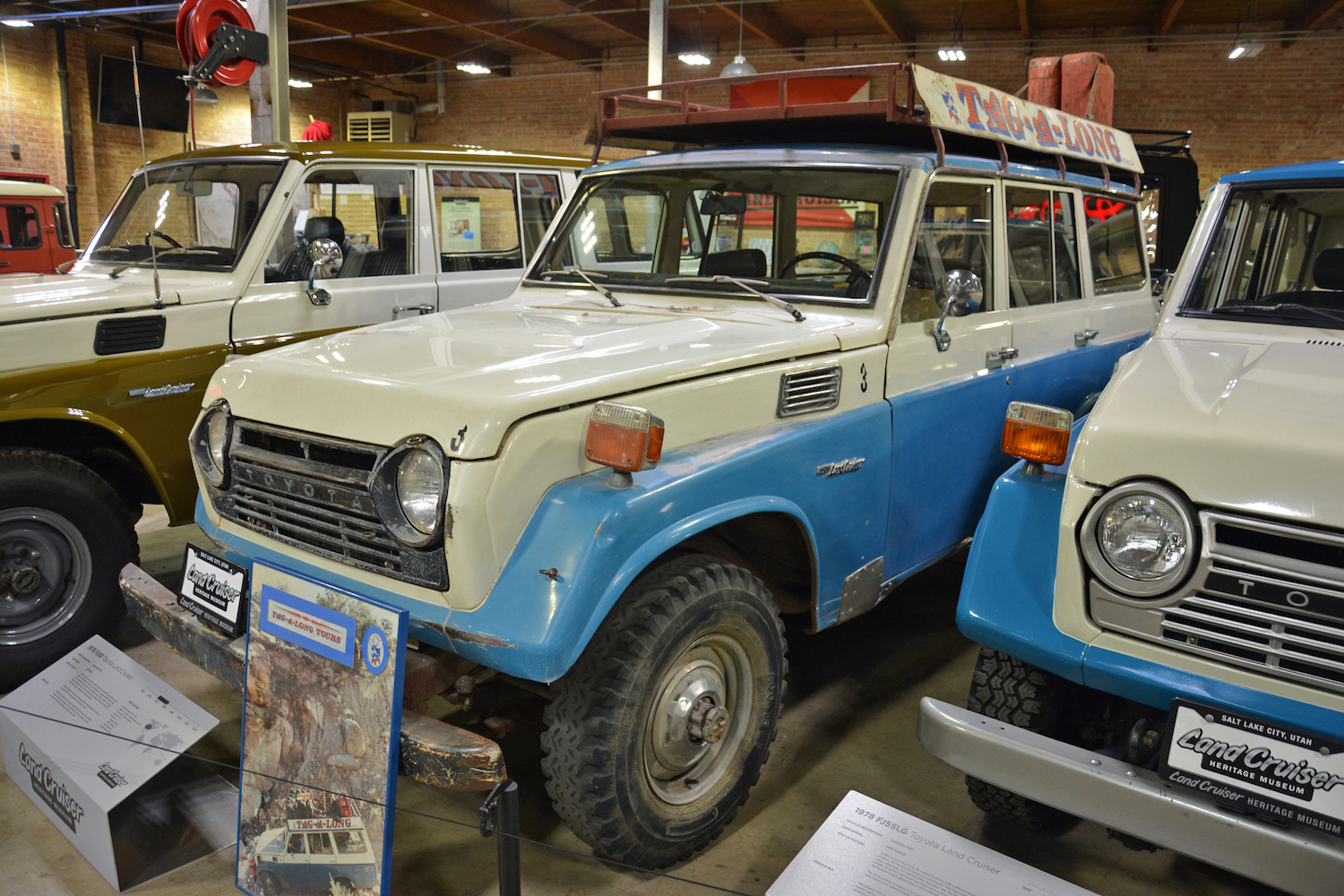
While few FJ55s were used sparingly, this two-tone example led an unusually strenuous life. It joined the Tag-A-Long Tours fleet in Moab in 1978 and spent nearly two decades taking tourists on excursions through Utah’s gorgeous desert. It tackled some of the nation’s toughest trails with a full load of passengers, their gear tied down to a heavy-duty roof rack, and water drums strapped to its front end. There aren’t many off-roaders capable of surviving a trip like this without significant modifications.
It didn’t reach retirement age unscathed. Nearly every body panel is dented, and Utah’s red rocks managed to bend the FJ55’s thick metal bumpers into a unique new shape. Rust has a spectacularly healthy appetite for older Toyota trucks; Tag-A-Long’s wasn’t spared. Duct tape on the heater hoses below the dashboard suggest drivers occasionally made repairs on the go. Every scratch and chip has a story, and the fact that this FJ55 lived to tell about each one is a testament to its toughness.
Delta Mini Cruiser (1982)

Philippine-based Delta Motors began manufacturing cars and parts for Toyota in November of 1962, and the two companies worked together for approximately two decades, so Japanese executives didn’t balk when their Filipino counterparts announced plans to make a scaled-down Land Cruiser for the local army. Soldiers knew it as the M-1777, but the civilian variant sold in a handful of markets around the world was dubbed Mini Cruiser, a perfectly fitting name for what looked like a Fisher Price-made FJ.
Production started in the late 1970s, according to the museum, and ended in 1983 when Delta shut down. Delta made a version of Toyota’s 12R engine, so the company put the 1.6-liter four-cylinder in many of the M-1777s it delivered to the Filipino military. Built for European civilians, the yellow example shown here is powered by a 60-horsepower, 2.0-liter four-cylinder diesel engine provided by Isuzu.
Its history is murky; I was told the paint isn’t original, and the wooden hardtop is homemade. The museum sourced it from Budapest, and Hagerty’s own Máté Petrány explained that the EPL-112 registration number was issued in late 1994, which is likely when the Mini Cruiser was brought into Hungary. While the Italians bought a few hundred examples of this trucklet during the 1980s, and many Italian-market cars took a trip to Hungary during the 1990s (including Máté’s badass Autobianchi A112 Abarth), this Mini Cruiser isn’t wearing the government-mandated, fender-mounted turn signal repeaters every car had. They might have been removed, or it might be one of the few examples exported to Germany.
Toyota LD10 Blizzard (1982)

Toyota took advantage of the 16.5-percent stake it owned in Daihatsu, one of Japan’s oldest carmakers, to quickly develop an off-roader positioned below the Land Cruiser and aimed directly at the Suzuki Jimny. Released in 1980, the LD10 Blizzard was a first-generation Daihatsu Taft (sold as the Wildcat in some markets) with a Toyota emblem on the grille that denoted the presence of a 2.2-liter diesel engine rated at 72 horsepower. It was offered exclusively in Japan in a single body style but with several top options.
Approximately 4900 units of the LD10 Blizzard were made until production ended in 1984. It was short-lived, but the Taft it was based on had been on sale in Japan and abroad since 1974. Toyota and Daihatsu renewed their partnership for a second-generation model named LD20 Blizzard and Rugger, respectively, though the latter was better known as the original Rocky in the United States.
Daihatsu updated the Rocky in 1991, but Toyota chose not to renew the Blizzard. It left this segment of the market to Suzuki to focus on the entry-level, Prado-badged Land Cruiser launched in 1990.
BXD10 (1996)

There are two ways to look at the BXD10. On the surface, it’s a Xerox copy of the AM General Humvee. Show a photo of one to a friend who isn’t a student of off-roading or military history, and you’ll immediately hear “that’s a Hummer.” Beyond the obvious resemblance, however, Toyota developed this leviathan of a 4×4 for the Japanese Army, and government officials issued roughly the same guidelines that shaped the Humvee. Ending up with a similar-looking product was arguably inevitable.
The BXD10 was narrower than a Humvee but about 14 inches longer in its standard configuration. It was equipped with a 4.1-liter turbodiesel four-cylinder engine that spun the four wheels through a four-speed automatic transmission, and it sat on Mercedes-Benz Unimog-like portal axles that helped increase ground clearance to 16.5 inches, providing jaw-dropping off-road prowess.
Toyota manufactured about 3000 examples of the BXD10 between 1996–2001, and they served the military well. They transported troops and carried surface-to-air missile launchers that weighed as much as a Tercel. Above all, Japan’s home-brewed Hummer proved Toyota, the uncontested champion of the cheap and cheerful, could develop a burly 4×4 that made a Land Rover Defender wet its pants.
BXD20 Mega Cruiser (1996)

Toyota didn’t seriously envision making a civilian variant of the BXD10. It was too big for crowded Japanese cities dominated by kei cars the size of pocket lint, and it risked running over Mazda MX-5 Miatas on tiny country roads. Its tank-like fuel economy made it far too expensive to drive on even a semi-regular basis. Besides, who would want to be seen in such an ostentatious beast? More than one person, as it turns out. Requests for a more daily-drivable BXD10 grew louder, and Toyota caved.
It called the new version BXD20, though the model was known as the Mega Cruiser in the select stores that sold it. Pricing started at nearly 10 million yen, a figure which put it in the same ballpark as the royalty-approved Toyota Century and the Honda NSX. Instead of sumptuous leather or a mind-reading chassis, buyers received a 4.1-liter four-cylinder turbodiesel engine that sent 153 horsepower and a stout 282 pound-feet of torque to the pavement via a four-speed automatic transmission and portal axles. Its 16.5 inches of ground clearance made it nearly unstoppable off-road, yet it was surprisingly tame in urban centers thanks in part to a four-wheel steering system that reduced its turning radius.
Most sources agree 149 units of the Mega Cruiser were made between 1996 and 2001, though I’ve also seen 151 and 132 listed as the correct numbers, and no one disputes the fact that almost every example was sold new in Japan. Somewhat ironically, it’s such a rare model that a good chunk of the production run quickly ended up stashed in private collections, far from the great outdoors, and kept as investments. Good examples trade hands for over $100,000 in the rare instances in which they come up for sale.
VZJ90W (1996)

Toyota released the original Land Cruiser Prado in 1990 for motorists who needed a rugged off-roader but found the standard model too big. While it was never sold in the United States, it was popular in numerous global markets, including Japan. The second-generation model took the torch in 1996.
The range again included a short-wheelbase two-door variant (pictured) and a long-wheelbase version with four doors. Product planners noticed Prado buyers often used the truck as their only car, and they sensed a growing demand for upmarket features, so they delivered by offering it with leather and wood trim, among other niceties. The museum’s example is a full city-warrior-spec model with two-tone paint accented by decals, a roof-mounted spoiler (in case you suddenly need downforce in the wilderness), and alloy wheels. The full-size Land Cruiser also moved in a posher direction during the 1990s.
Toyota again decided not to sell the Prado in the United States, where its dealers gave buyers in the market for a smaller SUV a 4Runner brochure. However, the Lexus GX released in America for the 2003 model year was essentially a badge-engineered third-generation Prado with a brand-specific interior, a longer list of standard and optional features, a 4.7-liter V-8, and the same dauntless approach to off-roading. The retro-fabulous FJ Cruiser released in 2006 shared many parts with the Prado, too.
Among these eclectic, historic vehicles, which would be first on your list while visiting Salt Lake City’s Land Cruiser Heritage Museum? Let us know in the comments below.





















































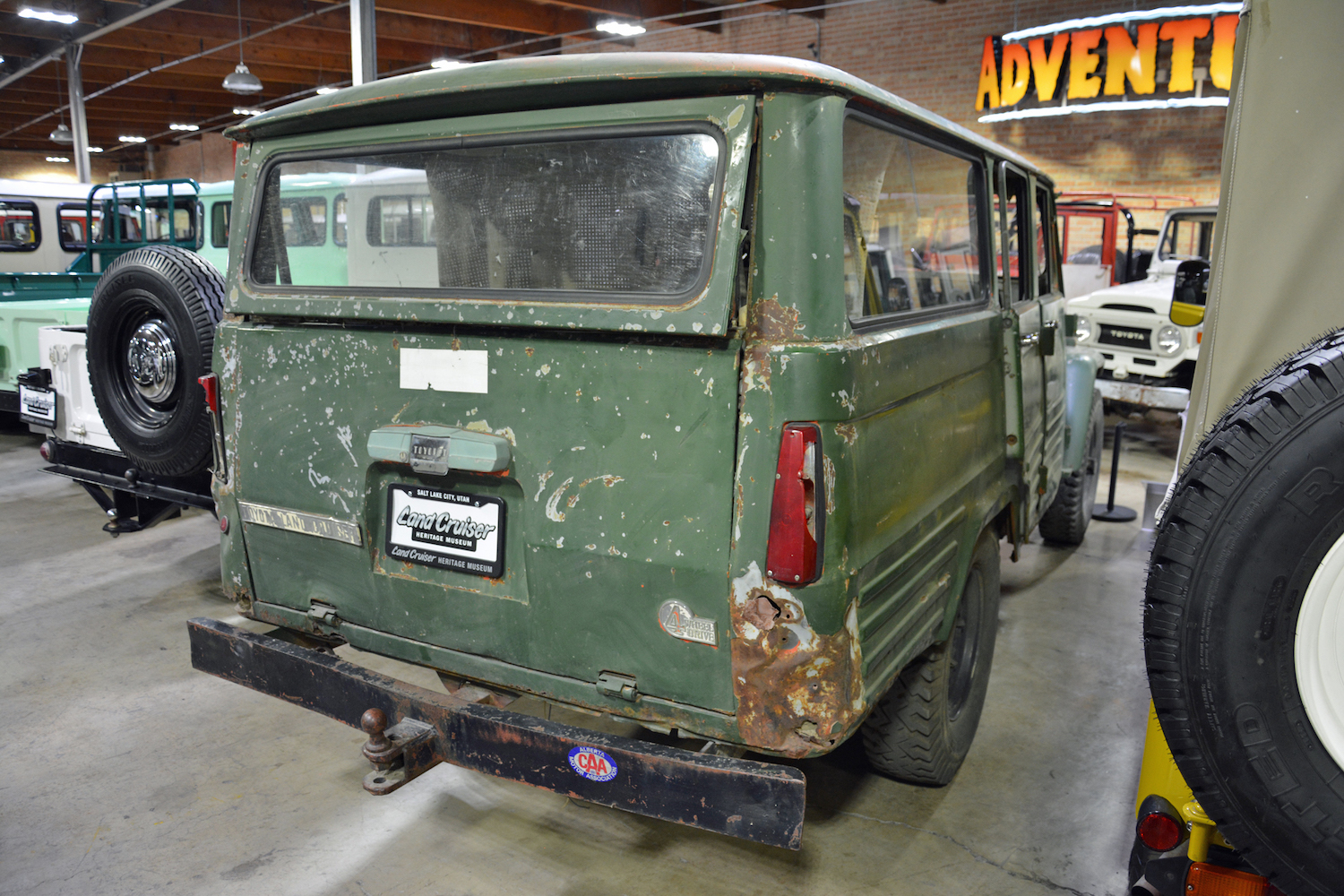










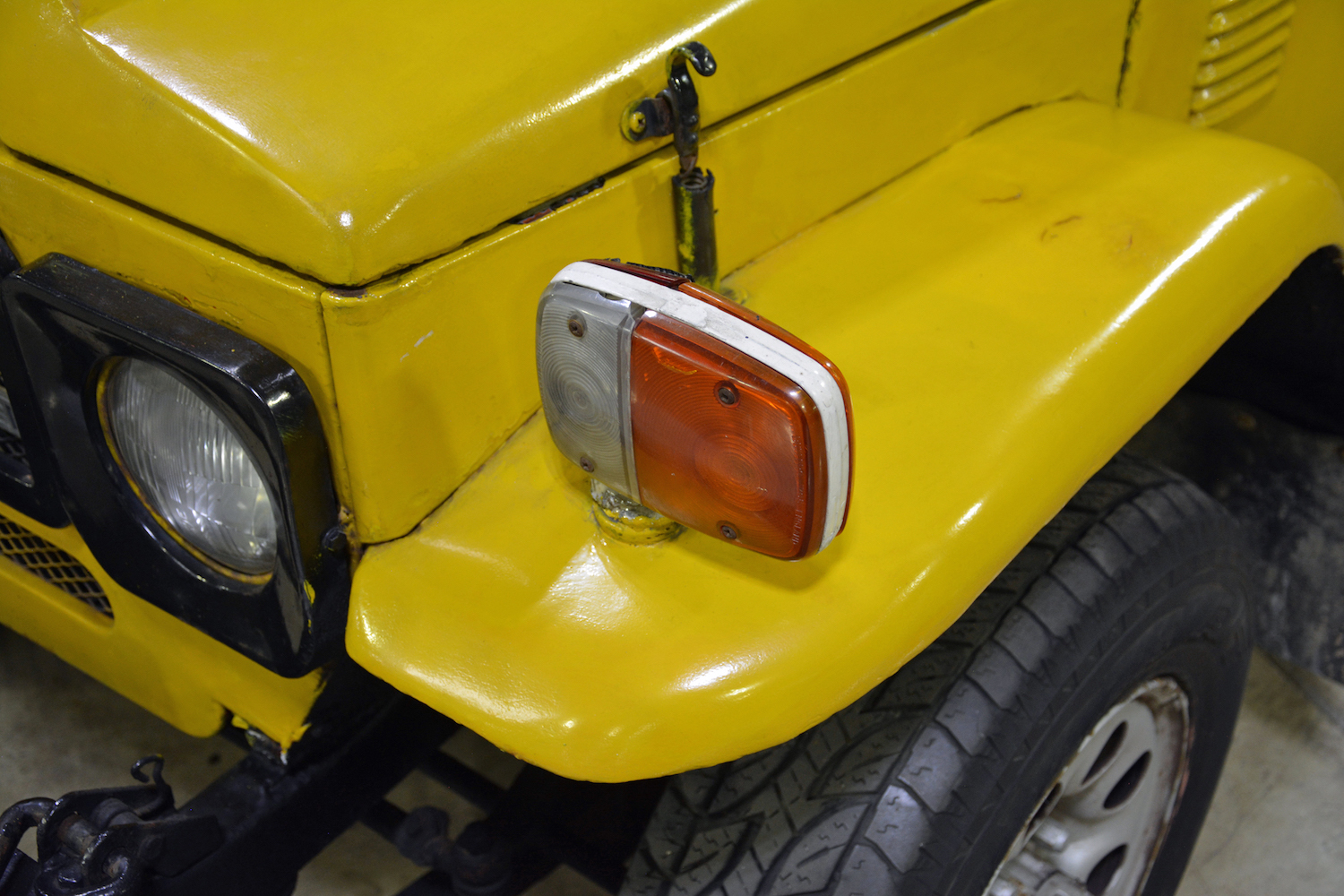
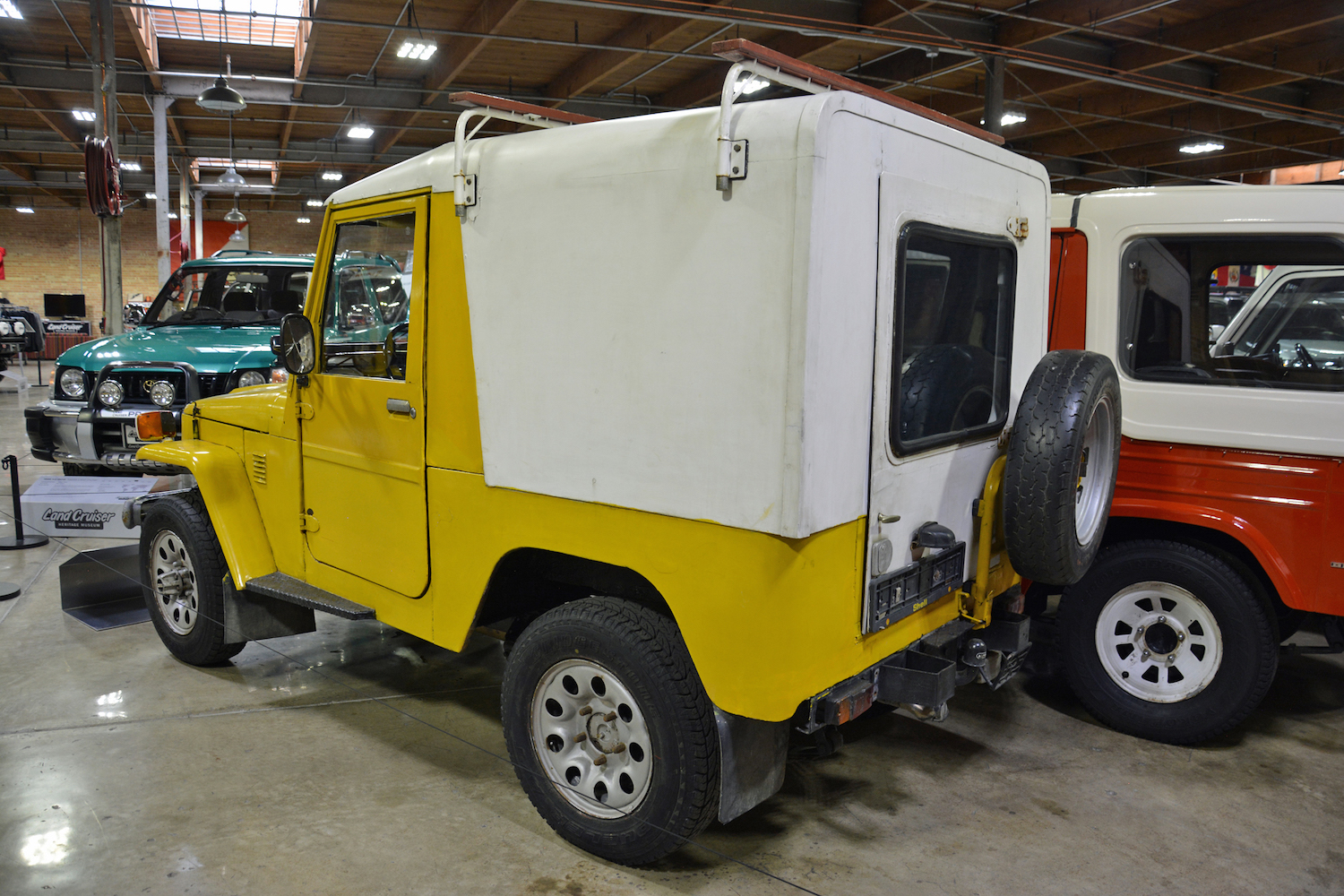

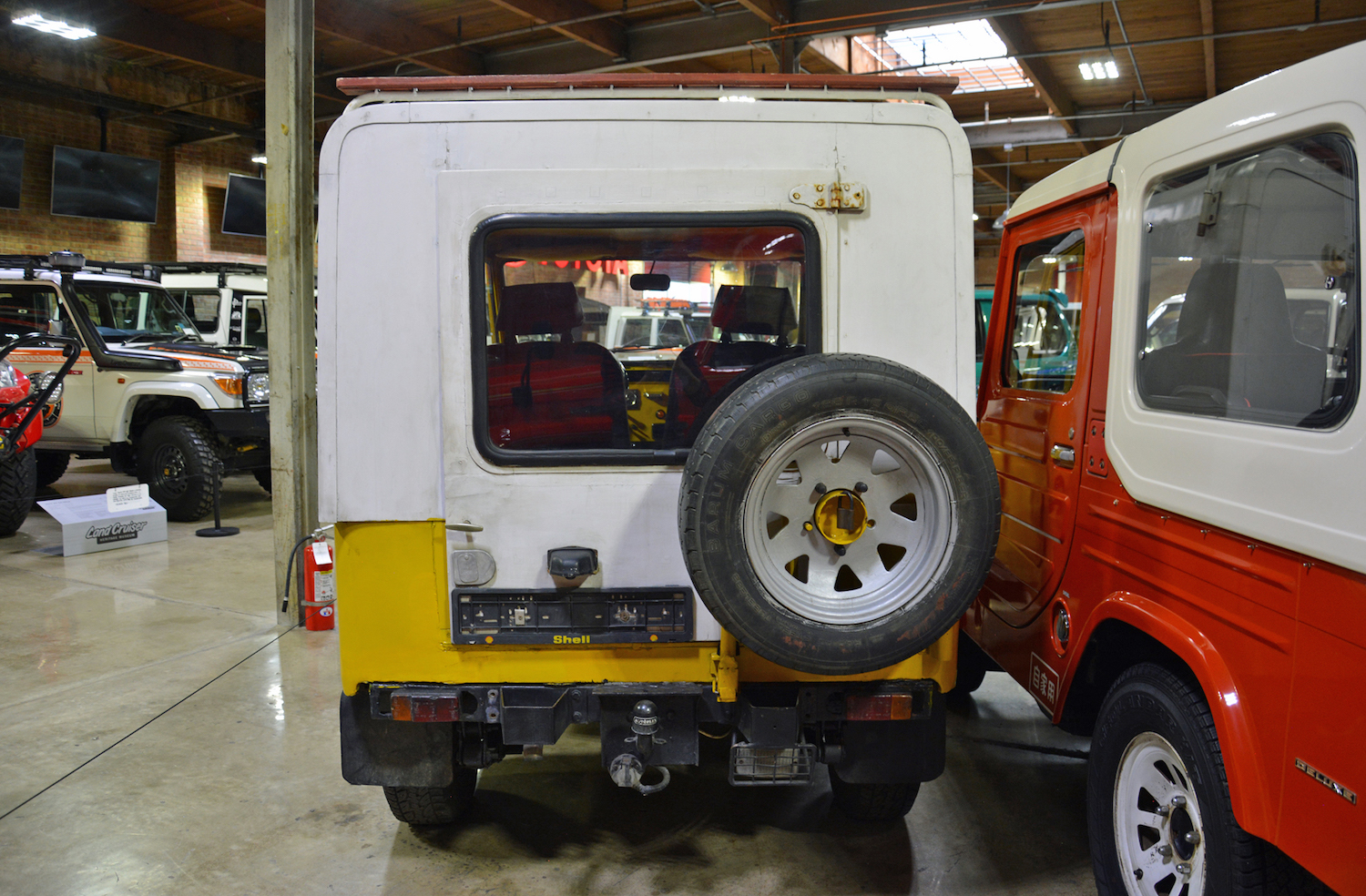




























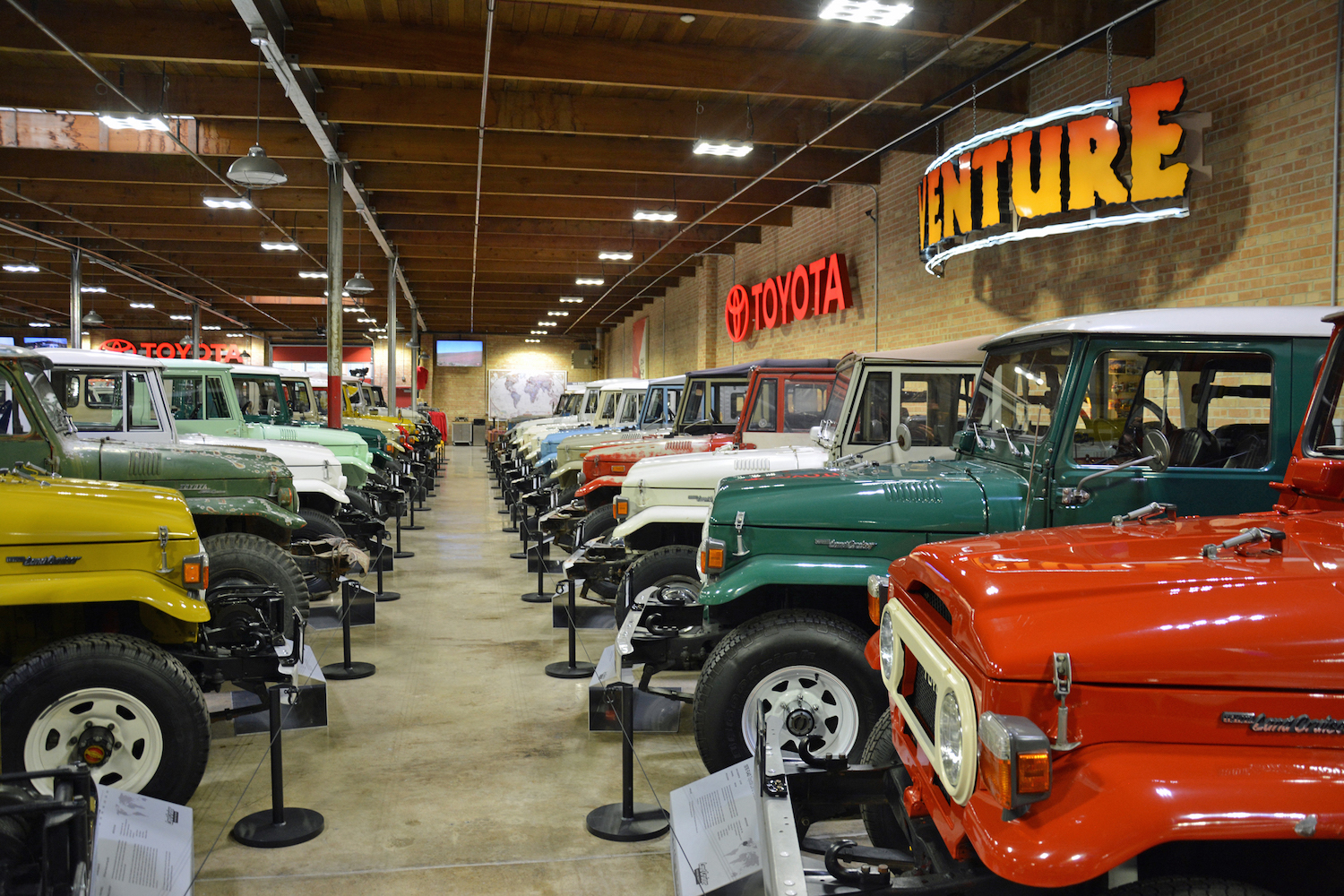


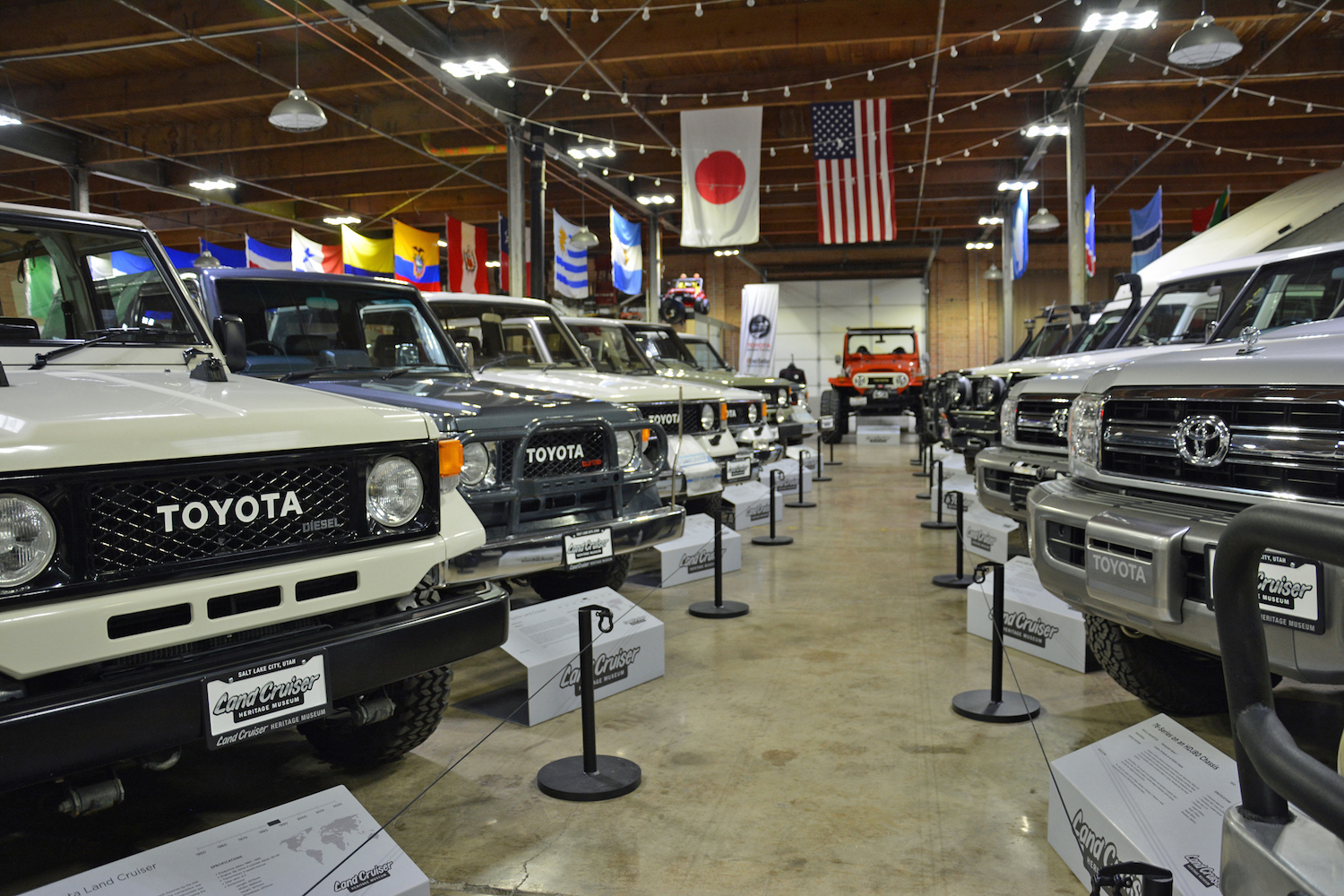


Outstanding write up, fantastic pics. Thank you!
I bought a 1966 FJ45 ?, back in about 1970-72, it was a faded red short bed pickup with the rounded bed corners. I traded it in on an El Camino and to this day have always regretted it. I traded it in at Crown Toyota in Provo,UT and I think one of the sales people ,Mitch Bishop , bought it . Beyond that I have no clue where it went. Love toes it and own it today…..